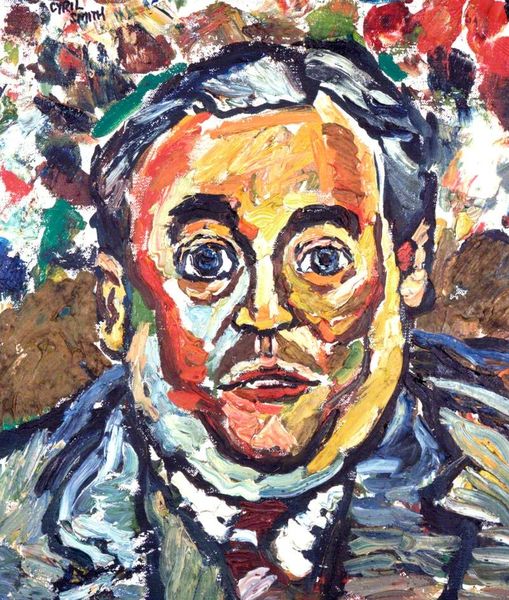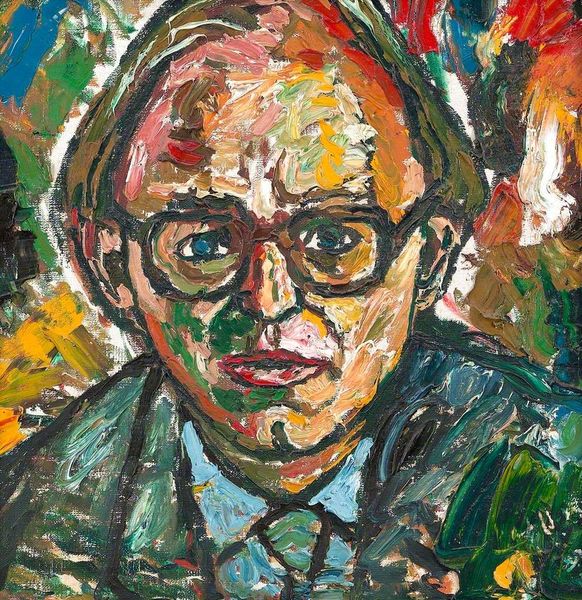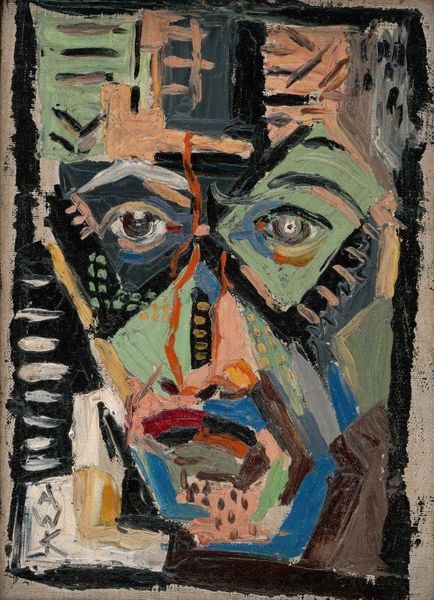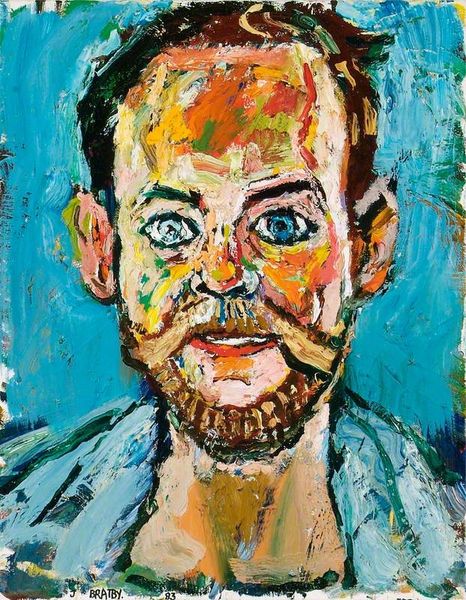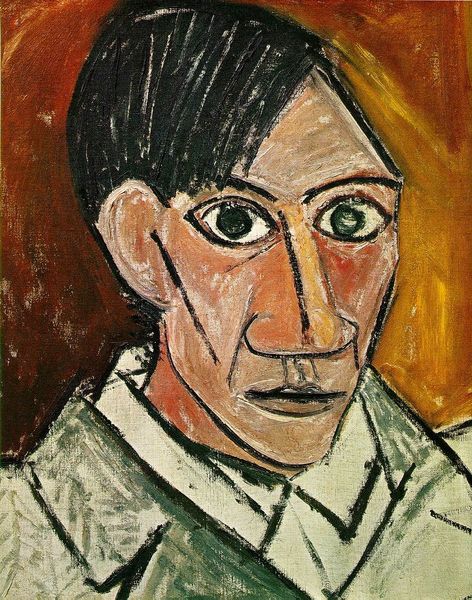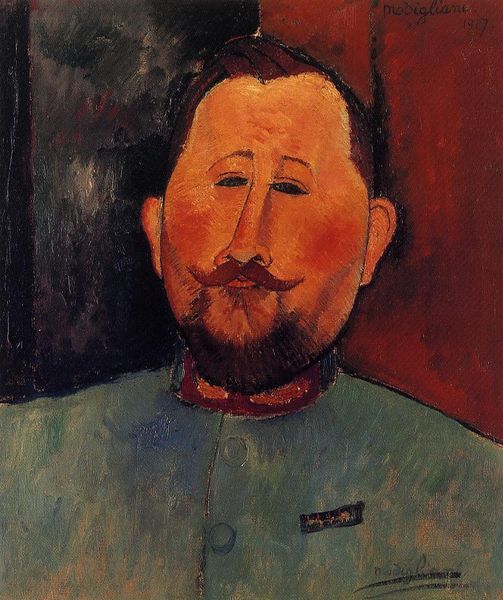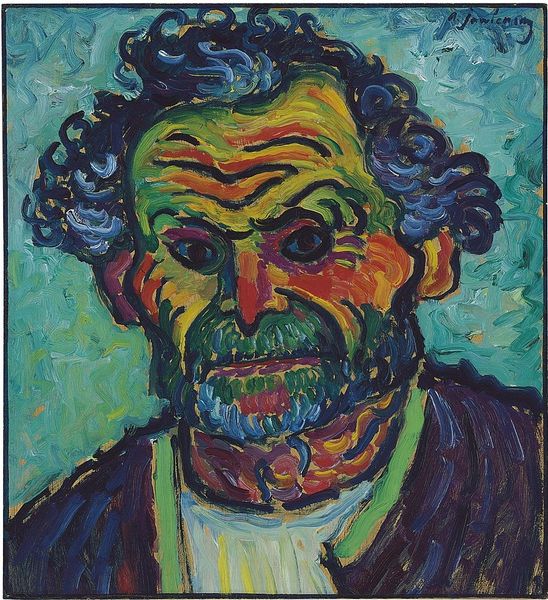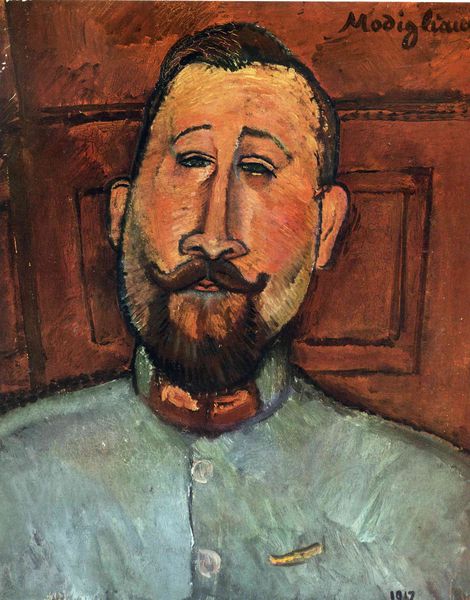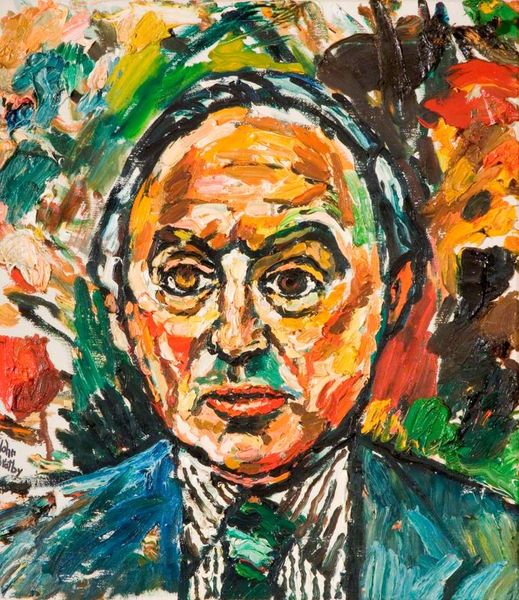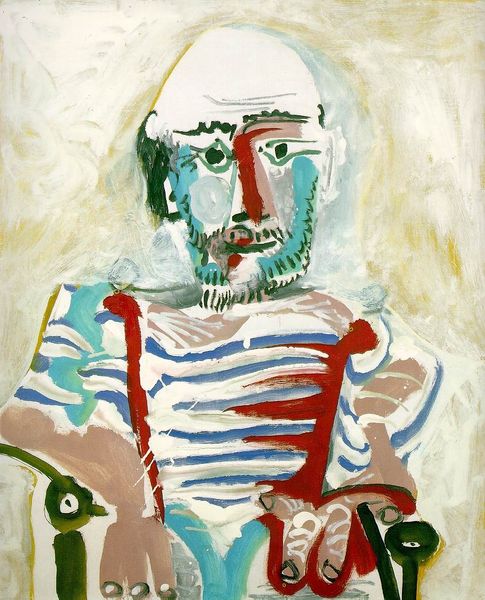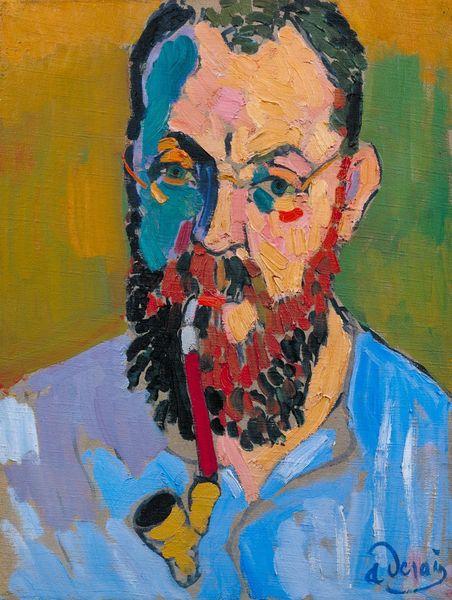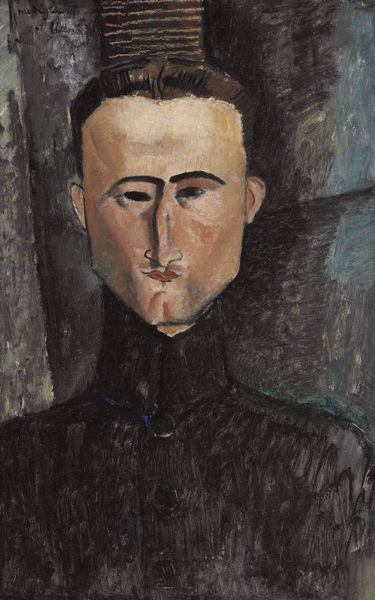
Copyright: John Bratby,Fair Use
Editor: We're looking at a portrait titled "Richard Pasco" created in 1977 by John Bratby, seemingly using acrylic paint on canvas. It's quite striking, with such heavy, textured brushstrokes. How would you interpret this piece? Curator: Let's consider first the artist's engagement with materiality. Bratby deploys the acrylic medium in a notably impasto manner. Note the pronounced ridges and furrows. This articulation doesn't simply render an image; it foregrounds the very substance of paint. Observe how these dense applications sculpt the planes of the face, not merely imitating form, but building it up through tactile gesture. Editor: So you're saying the paint itself is almost as important as what's being depicted? Curator: Precisely. Consider how the intensity of color, particularly around the eyes and mouth, functions in relation to the textural density. Do these concentrated areas of pigment serve to heighten certain emotive registers? Also, how does the artist manipulate color to construct a visual architecture on the canvas? Is there a symbolic dimension embedded within these chromatic relationships, or is color serving primarily to define structure? Editor: It's interesting how the bright colors are really focused on his face, especially around his eyes which gives him an intense look. It feels almost confrontational because of that. I didn’t consider the colour before. Curator: Reflect then on the structural implications of that distribution of colour and texture. How might Bratby's seemingly crude, yet carefully calculated impasto technique challenge conventional modes of portraiture, potentially engaging with broader art-historical discourses of representation and abstraction? Editor: Seeing how the materials build the portrait in that confrontational way is completely transforming how I viewed the artwork at first. Curator: Indeed. Attending to these formal properties unlocks deeper readings and fosters richer engagement with Bratby's project.
Comments
No comments
Be the first to comment and join the conversation on the ultimate creative platform.
